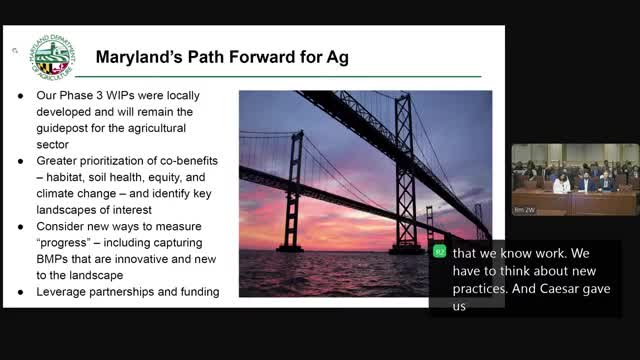Maryland launches Leaders in Environmentally Engaged Farming to boost agriculture and protect Chesapeake Bay
January 28, 2025 | Education, Energy, and the Environment Committee, SENATE, SENATE, Committees, Legislative, Maryland
Thanks to Scribe from Workplace AI , all articles about Maryland are free for you to enjoy throughout 2025!

This article was created by AI using a video recording of the meeting. It summarizes the key points discussed, but for full details and context, please refer to the video of the full meeting. Link to Full Meeting
The spotlight was on the newly launched "Leaders in Environmentally Engaged Farming" (LEAF) initiative, which draws inspiration from the well-known LEED building standards. This innovative program encourages farms to adopt a variety of sustainable practices, earning them a LEAF score based on their environmental impact. The initiative aims not only to enhance soil health and water quality but also to promote climate-smart agriculture and support local food banks. By fostering resilience within the agricultural sector, the program seeks to create a stronger partnership between farmers and conservation efforts.
Secretary of the Maryland Department of the Environment, Serena McElwain, emphasized the dual focus of their efforts: protecting the Chesapeake Bay while simultaneously bolstering the state's economy. She noted that the Bay supports a staggering $3.2 billion in tourism, underscoring the importance of maintaining its health for both environmental and economic reasons. McElwain shared her experiences from visiting various counties, where she witnessed firsthand the impact of state funding on local communities, particularly in overburdened areas.
The committee also discussed the challenges faced by smaller communities in securing funding for essential infrastructure, such as wastewater treatment plants. McElwain acknowledged the need for more flexible financial solutions, including potential loan forgiveness, to ensure that all communities can benefit from state support.
As the meeting progressed, the committee reflected on their recent accomplishments, which are guided by three core priorities: reducing pollution at the source, modernizing stormwater regulations, and strengthening partnerships across the state. The Chesapeake Bay's recent high grades from various organizations were celebrated as a testament to the collaborative efforts being made to improve environmental conditions.
As the session concluded, the committee left with a renewed sense of purpose, committed to advancing Maryland's environmental goals while fostering economic growth. The discussions held that day not only set the stage for future initiatives but also reinforced the vital connection between a healthy ecosystem and a thriving community.
Converted from EEE Committee Session, 1/28/2025 #1 meeting on January 28, 2025
Link to Full Meeting
Comments
View full meeting
This article is based on a recent meeting—watch the full video and explore the complete transcript for deeper insights into the discussion.
View full meeting